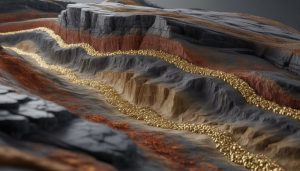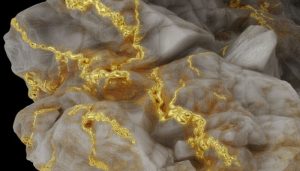On This Page
Table of Contents
A gold dredge is a machine that pulls sand, gravel, and sediment from underwater so the valuable material inside can be separated and collected. It uses strong suction to move material through a hose and into a sluice box, where heavier particles settle while lighter debris washes away. This method lets miners process far more sediment compared to manual tools, making recovery faster, easier, and much more efficient. Whether someone is a hobby prospector or running a small mining setup, this type of equipment can significantly boost overall results.
Types of Gold Dredges
Gold dredges come in different styles depending on where and how they’re used. Larger floating models are built for heavy-duty river mining, while smaller portable versions are ideal for hobby prospectors who need something lightweight and easy to move around. Another popular option is the underwater type, which divers use to work directly on the riverbed and focus on cracks and crevices where gold often settles. Each version has its own strengths, but the goal is always the same: reach deeper deposits and recover gold as efficiently as possible. Understanding the right type of gold mining for your area helps determine which dredge will perform best.
A Look at Old Gold Dredge History
An old gold dredge wasn’t a small tool; it was a massive floating structure that could process huge amounts of material every day. These machines were commonly used in the late 1800s and early 1900s for major gold mining projects. They were powerful enough to reshape entire riverbeds while extracting large amounts of gold. Today, many of these old dredges sit abandoned as historic reminders of early mining technology, but the engineering behind them helped inspire today’s modern, compact dredges.
DIY Options for Beginners
A lot of hobby miners search for how to make a gold dredge or how to build a gold dredge because homemade setups are often more affordable and easier to customize. A basic DIY system usually includes a pump, hoses, floats, and a sluice box. Building one is definitely possible, but it does require some planning, especially when choosing the right pump power, hose size, and making sure the water flow stays steady and safe. When put together properly, a DIY dredge can be an excellent starting tool for small-scale prospecting.
Why Use a Gold Dredge?
Using a gold dredge offers several advantages for both new and experienced prospectors. Instead of relying on slow, manual methods, a dredge helps you reach deeper spots, process more material, and recover gold more efficiently. It gives you access to areas that would normally be impossible to work by hand and makes the entire process faster, smoother, and far more productive. Below are the key reasons people choose to use this equipment today.
Higher Efficiency Than Traditional Panning
Traditional gold panning is fun, but it’s slow and limited. A dredge lets you process far more material in a shorter amount of time, giving you a much better chance of finding gold. Even a small dredge can move enough sediment in a few hours to equal days of manual panning. That efficiency is one of the biggest reasons people use dredges today.Learn more about panning for gold.
Access to Deep or Hard-to-Reach Deposits
Gold naturally settles in deeper spots of rivers, especially inside cracks and pockets along the bedrock. These areas are impossible to reach with a shovel or pan, but an underwater gold dredge can easily access them. A diver can guide the nozzle directly into gold-rich areas, allowing for more accuracy and better results. This is especially helpful in places where gold sits several feet below the river’s surface.
Consistent Material Processing
With a gold dredge pump, material moves continuously through the system, keeping the sluice box running smoothly. Steady water flow helps separate gold more effectively because the lighter material washes away while the heavy gold stays trapped in the riffles. This level of consistency is hard to achieve with manual tools and is a major reason dredges are so effective.
Great for Hobby Prospecting and Small Mining Sites
Portable dredges are perfect for recreational prospectors because they’re easy to move, set up, and operate. You can take one to creeks, streams, or remote spots and start recovering gold quickly. For small operations that don’t want heavy machines, a dredge offers professional-level recovery without high costs or complex equipment.
Modern Technology Improves Recovery Rates
Today’s dredges use more efficient pumps, flexible hoses, lighter frames, and better sluice matting. These improvements help recover more gold, even from fine or difficult material. Modern designs also make dredges easier to handle, more stable in the water, and far more productive compared to older models. See how a gold mining trommel works for related technology in gold recovery.
How Does a Gold Dredge Work?
Understanding how a gold dredge works makes it easier to use the equipment effectively and improve your overall gold recovery. The basic idea is simple: suction pulls underwater material into the system, and a series of separation steps collect the heavier particles. But each part of the process plays an important role, from the pump to the hose to the sluice box. Below is a clear breakdown of how the entire operation works, step by step.
Suction and Collection System
The dredging process starts with a strong suction created by the gold dredge pump. This suction pulls sand, gravel, and sediment into the nozzle, much like a powerful underwater vacuum. The pump provides enough force to move even heavy material from the riverbed into the system.
Delivery Through the Hose
Once the material is sucked up, it travels through a hose attached to the dredge. The size and length of the hose affect how much material can be processed at once. The flow of material moves quickly through the hose and goes straight into the recovery system.
Sluice Box Separation
The sluice box is where gold separation happens. As material flows through it, the riffles and matting catch the heavier gold while lighter dirt and rocks wash out the other end. Since gold is much denser than other materials, it naturally settles into the sluice, making recovery simple and effective.
Water Flow and Gravity Processing
A gold dredge relies heavily on the right water flow. Too much flow and gold could wash out; too little and the sluice fills up with debris. A properly set dredge keeps the water at a steady rate so gravity can pull the gold down into the mats and hold it there. This natural combination of water pressure and gravity makes the process highly efficient.
Diver-Assisted Underwater Recovery
When using a diver-operated underwater gold dredge, the diver can target the exact areas most likely to contain gold. They guide the nozzle into cracks, deep pockets, and places where gold naturally settles. This direct approach reduces wasted effort and increases the amount of gold recovered per hour.
Cleanup and Gold Extraction
After enough material has been processed, the sluice box is opened and the mats inside are rinsed to remove the trapped gold. This step is called “cleanup,” and it’s where all the collected gold becomes visible. Miners repeat this cleanup process throughout the day to ensure nothing is missed.
FAQs
What is a gold dredge used for?
A gold dredge is used to suck up underwater sediment and separate out the gold inside it. It lets miners reach deep or hidden gold deposits that can’t be accessed by hand.
How does a gold dredge pump work?
A gold dredge pump pushes water at high pressure, creating suction that pulls sand, gravel, and sediment through a hose and into the sluice box for gold recovery.
Can I learn how to make a gold dredge at home?
Yes. Many people build their own dredges using pumps, hoses, floats, and a sluice box. It takes some planning and basic mechanical skills, but DIY dredges are common in hobby prospecting.
Are old gold dredges still in use?
Most old gold dredge machines are no longer used today. Many have been abandoned or turned into historical displays, but they played an important role in early gold mining.
Conclusion
A gold dredge is a highly effective tool for recovering gold from underwater areas, and understanding how each part works can help you get much better results. Whether you’re interested in DIY options, looking into different setups, or simply learning the basics, knowing the process makes a big difference. Modern equipment is lighter, stronger, and far more efficient than older versions, which makes it a great choice for both beginners and experienced prospectors. With the right setup and good technique, gold recovery becomes faster, smoother, and much more rewarding.
Read about: Is Gold a Mineral?



